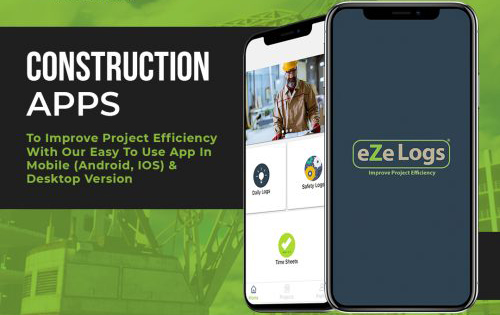Project manager techniques is an integral component of any successful construction project, from planning and organizing resources, through organizing risk, budgeting and scheduling them to ensure completion on time and within budget.

A key to the success of any construction project lies with its project manager; here we discuss some effective techniques used by successful project managers that ensure projects complete on schedule and under budget.
To that end, in this article we explore five techniques employed by successful project managers which ensure their projects come in on schedule and within budget.
Project manager techniques – Effective Communication
Proper communication is at the core of any successful business. In order to facilitate effective dialogue, it’s crucial that businesses utilize technical writing styles which are clear and concise while at the same time maintaining friendly yet professional tones in their writing style and tone.
Writing should use language that is easy for readers to comprehend, avoiding technical terms or jargon that is unfamiliar or overly complex. Furthermore, writing should be clear and direct with no overly long or complex sentences used as sentence structures.
Communication between colleagues should always be conducted in an courteous and polite manner, using friendly language instead of anything which might appear aggressive or confrontational.
Finally, it is key to remain aware of who your audience is when writing content for them. Tailoring writing style and tone accordingly should provide optimal results in reaching that specific group.
By following these tips, you can ensure effective communication in your business.
Risk Management
Risk management is an indispensable aspect of business operations. By taking proactive steps to identify, assess, and control potential threats which might cause harm, organizations can protect their assets while minimising losses while maximising profit potential.
At its core, risk management involves understanding and mitigating risks to your business that could pose potential threats, while taking measures to address them. This involves recognizing risks as they emerge and taking steps to identify, assess and reduce or eliminate them through strategies or policies.
Risk management is an ongoing process which necessitates regular review to keep up-to-date and account for changes to the business environment. Therefore, reviewing your risk management plan regularly to keep it accurate will allow any updates in risk assessments to take into consideration changes that have taken place over time.
Risk management is an intricate and dynamic process. To successfully execute it, one needs a knowledgeable team who can identify risks, assess them and devise ways of mitigating them before measuring their effectiveness over time.
Proactive risk management measures allow businesses to protect assets, reduce losses and maximize profits – an integral component of any successful venture and should not be neglected.
Team Building and Collaboration
Team building and collaboration are cornerstones of any successful organization. By cultivating a culture of cooperation among teammates, organizations can work toward meeting common goals.
Team building activities are designed to foster unity and purpose among team members. From simple icebreakers to more intricate problem-solving exercises, engaging in team building activities helps establish trust between teammates. Engaging in these activities also can improve communication and collaboration efforts among members.
Collaboration is at the core of effective team performance. By coming together and taking advantage of each member’s individual strengths and weaknesses, teams can harness them together for maximum effect in creating solutions to problems. Collaboration also fosters creativity and innovation as team members share ideas while building upon one another’s ideas.
To facilitate successful teambuilding and collaboration, it is vitally important that an environment encourages open dialogue and trust between team members. This can be accomplished by setting clear expectations, providing feedback, recognizing individual contributions and offering adequate training or access to technology as resources necessary for their success.
By encouraging team building and collaboration in their organizations, organizations can foster an environment that facilitates innovation. This may lead to improved performance, higher productivity levels and superior results.
Time Management
Time management is an essential skill needed for both success in both your professional and personal lives. It involves setting goals, prioritizing tasks, and organizing time effectively so as to maximize productivity and efficiency. Here are a few pointers on managing your time:
1. Set reasonable goals. Ensure the goals you establish are achievable within reasonable timelines using available resources and time.
2. Prioritize Tasks. Determine which activities are of most significance to you, and focus your energy there first.
3. Create and stick to a plan. Draw up and execute an agenda outlining how you will spend each of your waking moments every day and don’t deviate from this path.
4. Take breaks. Taking regular breaks can help ensure you remain focused and productive throughout the workday.
5. Eliminate Distractions. Turn off notifications and limit how long you spend on social media or any activities which might impede productivity.
6. Seek Assistance. Don’t be embarrassed to reach out if assistance is required; do it whenever it becomes necessary!
By following these tips, you’ll soon become more organized and efficient with your time management. Good luck!
Stakeholder Management
Engaging stakeholders effectively is essential to any project’s success, with stakeholder management consisting of identifying, engaging and controlling them so that all their needs and expectations can be fulfilled.
First step of stakeholder management involves identifying all stakeholders involved with your project – customers, suppliers, partners and employees are examples of such stakeholders. Once identified it’s essential to understand their needs and expectations through interviews or surveys as soon as possible.
Once stakeholder needs and expectations have been identified, it’s essential that their input be integrated into the project through regular communication methods such as meetings, emails or newsletters. Stakeholders should also remain up-to-date regarding any modifications to or updates of the project.

Finally, it is crucial that expectations for all stakeholders are properly managed. This can be accomplished by setting realistic goals and timelines and regularly updating stakeholders on progress reports. Furthermore, stakeholders should have ample opportunities for providing their input or giving their opinion regarding projects they take part in.
Stakeholder management is a fundamental aspect of every project, and must include understanding their needs and expectations, engaging them in your plans, and managing their expectations to ensure its success.
The Bottom Line
Employing effective communication, risk management, budgeting, scheduling and team-building techniques are integral to making any construction project a success.
Through using such techniques project managers can ensure their projects are completed on schedule within budget with high quality finishes that bring joyous success for everyone involved in them. With these five techniques at their fingertips construction projects are likely to end successfully and bring satisfaction for everyone involved in them.


